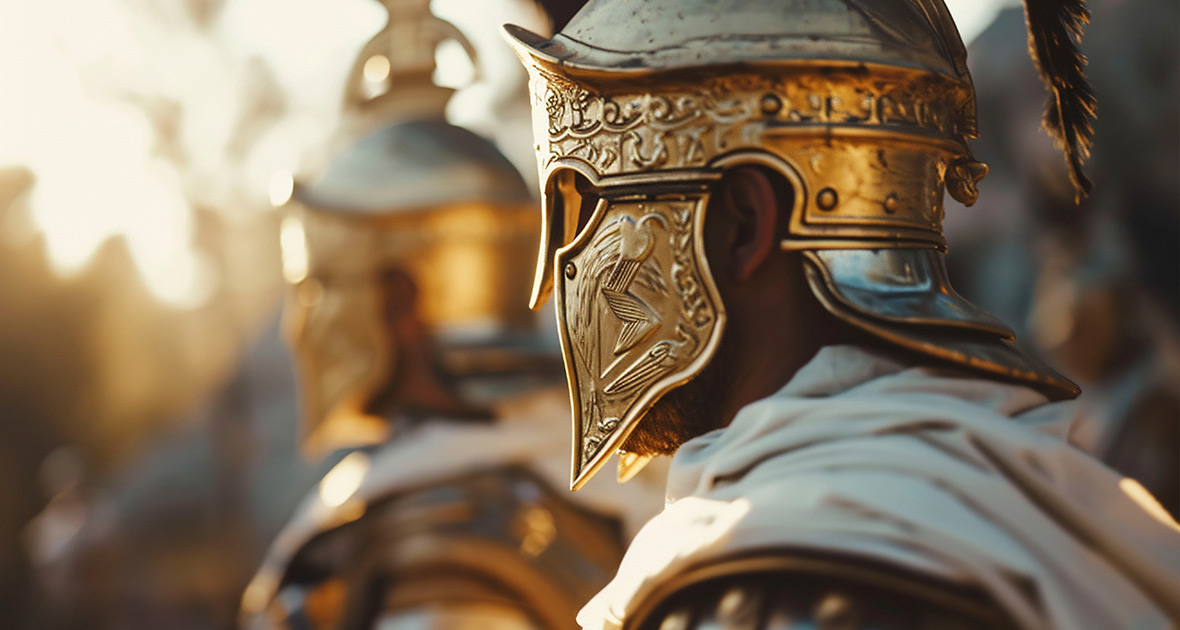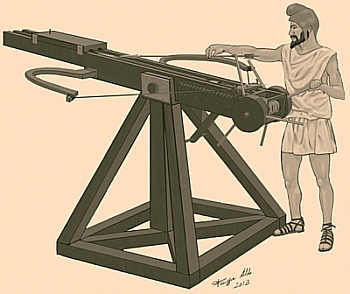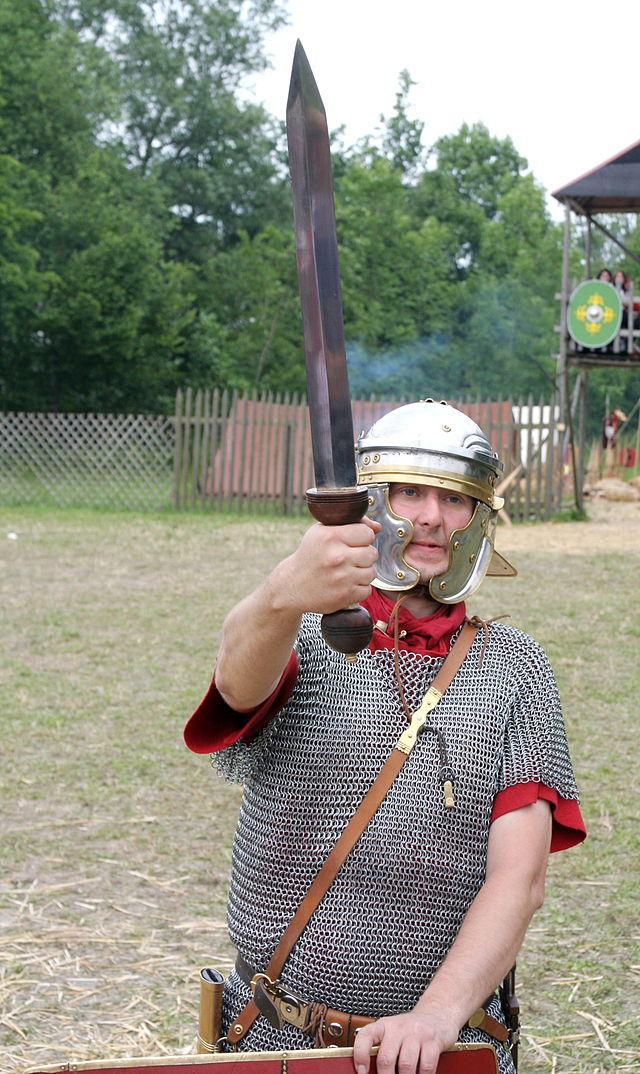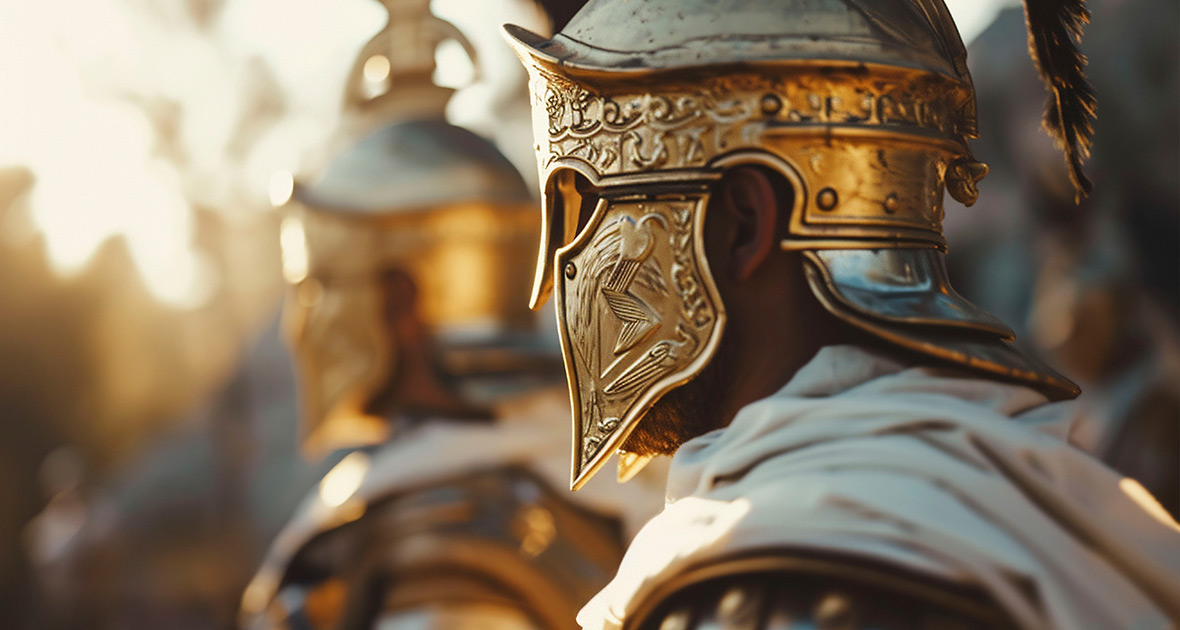The clash of swords, the roar of soldiers, and the thunder of siege weapons echoed across ancient battlefields, leaving an indelible mark on history. Greek and Roman military weapons were not just tools of war—they were symbols of power, innovation, and cultural identity. From the Gladius of the Roman legionaries to the phalanx formations of Greek hoplites, these weapons and tactics laid the foundation for Western military history. Their influence continues to resonate in modern warfare, proving that the ingenuity of ancient civilizations still shapes the world today.
Technological Innovations in Weaponry – The Tools of Conquest
The Greeks and Romans were masters of military innovation. The Gladius, a short, double-edged sword, became the backbone of Roman legionaries. Its design allowed for quick, precise strikes in close combat, making it a fearsome weapon on the battlefield. Meanwhile, Greek hoplites wielded the Dory, a long thrusting spear, and carried the Xiphos, a short sword for close-quarters fighting. These weapons were not only effective but also reflected the disciplined and strategic mindset of their users.

Credit: Battle Merchant
Siege weapons like the catapult and ballista showcased the engineering prowess of these ancient civilizations. The ballista, a massive crossbow-like device, could hurl heavy projectiles with deadly accuracy, while catapults were used to breach enemy fortifications. Even armor saw significant advancements. The Roman Lorica Segmentata, a segmented plate armor, provided superior protection and mobility, influencing the development of modern body armor.

Credit: Wikiwand
Cultural and Social Impacts – Weapons as Symbols of Power
In ancient Greece and Rome, weapons were more than tools of war—they were symbols of status and civic duty. The hoplite’s armor, with its iconic bronze helmet and round shield, represented the citizen-soldier ethos. These warriors were not just fighting for themselves but for their city-states, embodying the ideals of courage and unity.
For the Romans, military equipment symbolized discipline and organization. The legionary’s uniform, from his Gladius to his scutum (shield), reflected the might of the Roman Empire. This tradition continues today, as modern military uniforms and equipment symbolize national pride and identity.
Notable Military Figures – The Heroes of Antiquity
Great leaders like Alexander the Great and Julius Caesar wielded these weapons to achieve legendary conquests. Alexander’s use of the phalanx formation, combined with swift cavalry charges, allowed him to conquer vast territories from Greece to India. Julius Caesar, with his disciplined legions and innovative tactics, expanded the Roman Empire to its greatest extent. These leaders demonstrated how advanced weaponry and strategic brilliance could change the course of history.

Credit: Wikipedia
Tactical Changes and Warfare Evolution – The Art of War
The evolution of weapons led to significant changes in battlefield tactics. The Greek phalanx, a tightly packed formation of hoplites, was nearly impervious to frontal attacks. The Romans adapted this concept into their legion formations, which were more flexible and allowed for greater maneuverability. The testudo (tortoise) formation, where soldiers interlocked their shields, provided protection against projectiles—a tactic still relevant in modern urban warfare.
Impact on Western Military History – The Enduring Legacy
The innovations of Greek and Roman military technology and tactics have left a lasting legacy. From medieval knights to modern armies, the principles of discipline, organization, and advanced weaponry developed by the Greeks and Romans have been passed down through the ages. Today, military training and strategy still draw inspiration from these ancient masters of war.

Credit: Wikiwand
Conclusion: The Timeless Influence of Ancient Military Mastery
The weapons and tactics of ancient Greece and Rome were not just instruments of conquest—they were expressions of cultural identity and technological ingenuity. Their legacy continues to shape modern warfare, reminding us of the strategic brilliance of the past. Next time you visit a museum, take a closer look at these ancient artifacts. They are more than relics; they are the foundation of our military heritage.
References:
Ancient Weapons and Armor: A Fascinating Journey from the Greeks to the Romans – link
Roman Military Personal Equipment – link
Greek and Roman Artillery – link
Important Weapons of the Roman Legionary – link
Categories: Ancient Civilizations, History, Military, War History
Tags: Ancient Warfare, Battle Tactics, Greek Weapons, Historical Innovation, Military History, Roman Weapons
Religion: Polytheism
Country of Origin: Britain, Egypt, France, Germany, Greece, India, Italy, Macedonia, Persia, Spain
Topic: Military History
Ethnicity: Mediterranean



